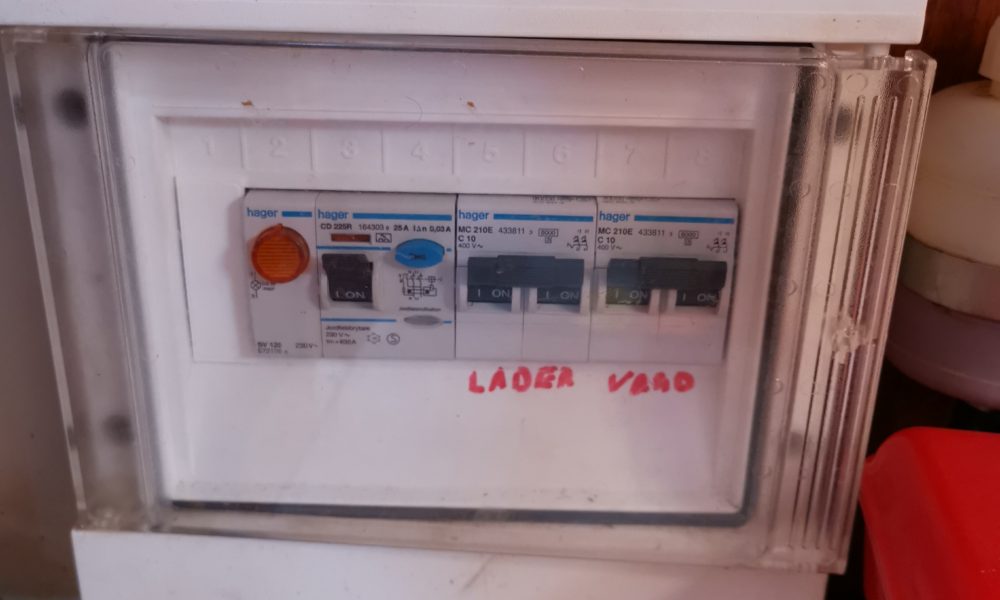
Electric systems for beginners
37° 45′ 43.318” N 23° 7′ 37.697” E
June 2nd, 2019
Today we had a bit of a disagreement with the tavern owners in Korfos. Their electricity didn’t work. We thought. Our cord did not work. They thought Definitely, we could not get power from shore.
Fortunately we were next to our old acquaintance Göran from S/Y Evanna III. We had previously met Göran in Paris (link), and Göran is an electric engineer. In addition, he is a good teacher. So, this blog post is going to be about electric boat systems for beginners. Because we learned a lot.
In troubleshooting electrical systems, it seems basically as if you have to think the whole route from the outlet ashore and out to the boat’s various systems, and then come up with test-able ideas for where it may have gone wrong. Has the cord broken, like the tavern owner says? Well, then we swap the cord for another one and try again. Is the tavern electric supply actually off? Then we let a neighbor boat try the plug and see if they get power.
Well, it wasn’t the cord, but it seems our boat has a problem. That becomes more complicated, because we don’t know where to start. That’s what this post is about. What you do right there after trying the obvious, but before having to go to professionals (hopefully).
Fortunately, Göran had a voltmeter and it turns out to be very useful. The power does come down to the central relay of the boat, but the relay turns off every time we connect. Because of that, says Göran, there are three things which one should typically suspect The water heater. The battery charger. And the “rest”. In that order. The first thing we examine is whether there is a short circuit. Göran does this by measuring the resistance in each system. Resistance, Ohm, is what you learned about in school, we are told. Our water heater shows 75 ohms. Is that good or bad, we immediately ask.
Then it becomes complicated. But perhaps also useful for future readers. For we get another question back: “what is ohm’s law?”. Unfortunately, we have forgotten it, but Wikipedia saves us. U = R x I. Without being much wiser from that. “Lasse, can you read how many watts the water heater uses?” … Apparently, something like that is written on most machines. Ours is 750 W. So Göran expects it to pull 3 amps. He uses this other formula from Wikipedia to calculate: P = U x I. Then we put the 3 amps and the 75 ohms into ohm’s law. And get 220 V. So there is no short circuit. Then we became a bit wiser. That was actually applicable and useful.
The next step is to connect the systems one by one and see when the relay turns off. Impressively enough, Göran has a system so he can make 220 V power from the battery on his own boat. So we don’t have to bother the tavern with more power surges. Strangely enough, our systems actually work ok when we use power from S/Y Evanna III. Göran believes we have some leakage current or perhaps a hypersensitive relay. We also think there is something strange about the power of this tavern.
But fortunately we have learned that it is just a matter of testing it. And with that we break from Korfos and on to Agina. Then we have to see if their power supply will adhere to Ohm’s laws.
… And definitely we need to buy a voltmeter for Ronja